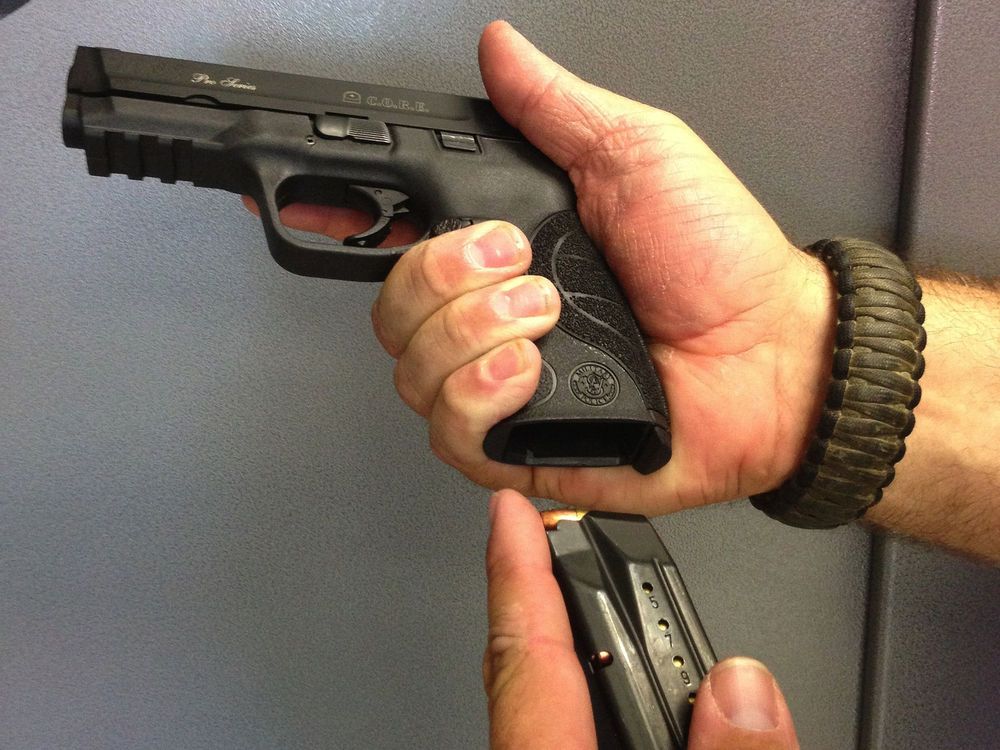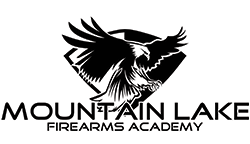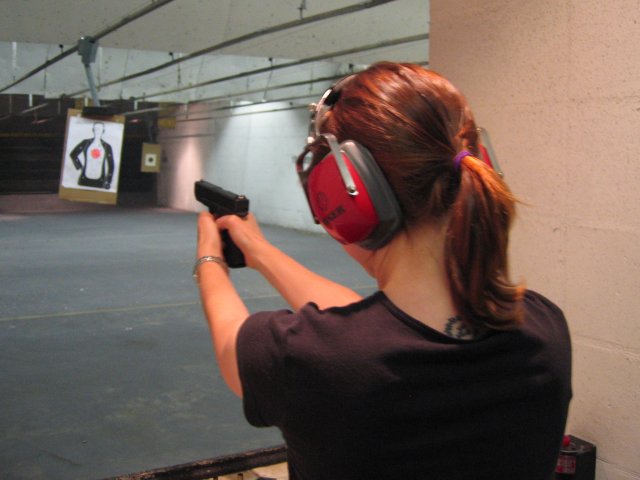
This drill is designed to help you improve reloading your firearm and re-acquiring your target for follow up shots.
- Range: 3 yards/5 yards/ 7 yards/10 yards
- Target: Torso zone (B27 Pro-G or similar, 8" paper plate, or 8½" x 11" paper)
- Start Position: Gun aimed on target
- Rounds Fired: 3
This is a close range drill starting at 3 yards (9 feet) so you can check your accuracy on your follow up shots. Once you get an acceptable level of accuracy, you can repeat this drill at 5 yards (15 feet), then again at 7 yards (21 feet), at 10 yards (30 feet). You will be able to practice reloading and placing your follow up shots as quickly as possible. Remember, don't go so fast that you repeatedly miss the target.
The drill begins with the shooter aiming at the target, finger on the trigger. On the start signal, fire a single round at the target. Then perform a reload and fire two more rounds at the target. It is important to get a good grip and visual awareness of the pistol after the reload in order to control the gun and get two accurate and fast hits.
To start with, use two fully loaded magazines, or speedloaders if using a revolver, fire one shot, reload, then fire two shots. This is performing tactical reloads. Repeat until you feel comfortable with your speed and accuracy. Then change distances.
After you are comfortable with your speed and accuracy at the different distances, load one magazine with one round and the other with two. Repeat the drills at the different distances. This will help you perform emergency reloads.

